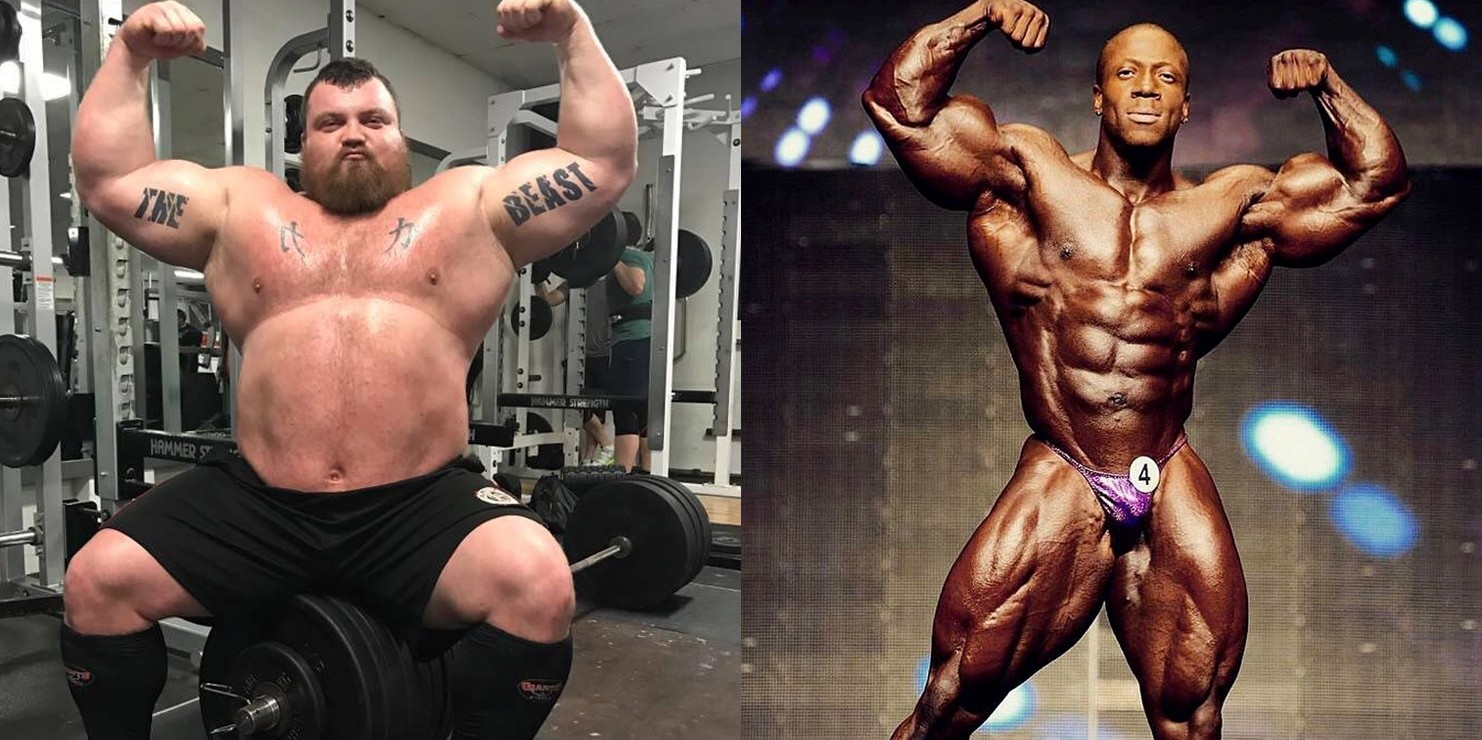
Certainly almost everyone has asked themselves whether they can or should and should train despite their sore muscles. Even if the answer to this question is not always that easy to give, I want to address the topic in this article.
This second article in the series of articles on sore muscles is about training with / despite sore muscles. I asked the following questions for you and I want to answer them with this article:
In the end, you should know exactly whether you have really sore muscles at all, whether and what you can or should train anyway and when the right time has come to get back into training after the sore muscles.
This article is part of a series of articles on sore muscles. The following topics were also covered by me in this series of articles:
Now let’s get back to the topic of training with sore muscles.
How to recognize real sore muscles
Many people think that their muscles are sore when they don’t actually have any (or just a little). This could be due to different things. For example, some people are simply not used to training and the associated regeneration reactions of the muscles. Some people simply feel differently about pain than others.
In fact, there is also the exact opposite. Especially people who have been training for a little longer sometimes also tend to overlook or downplay sore muscles. According to the motto there has to be a little pain so that the muscle grows and you train lively into the sore muscles. In the medium term, of course, this leads to stagnation or even regression and a greater risk of injury during training
As you can see, the sore muscles felt are subjective. So what you need to make the best decisions about your training are criteria that are as objective as possible.
Of course, without a medical examination, you cannot always objectively say 100% whether your muscles are sore or not. However, there are some criteria that you can use to determine whether you have a “real” sore muscles, which is why you should pause your training.
In principle there are 4 (relatively) objective factors by which you can see very well that you really have sore muscles and that you should rather spare your muscles a little longer than usual.
The most important distinguishing features of sore muscles:
- Slight pain in the muscle even with minimal movement without load
If the pain is severe, this can even indicate a worse injury. In this case you should consult a doctor.
- Significantly restricted (painless) range of motion
If your pain-free range of motion of the joint moved by the affected muscle is noticeably restricted, you can assume that your muscles are still sore requires a break.
- Impairment of movement even with low stress
If the muscles can no longer easily cope with everyday, low stresses, this indicates pronounced muscle soreness. It can also lead to (unconscious) compensatory movements and / or tremors in the muscles.
- Significantly limited strength development potential
If you have problems getting the performance of your muscles even with less than the usual training weights, you should allow your muscles to rest.
If one of these points applies, then I would advise you not to train directly with sore muscles, but to heed the information in the following sections regarding training with sore muscles and the right time to start again.
I always try to make it dependent on these characteristics whether and how I train or whether I prefer to skip the (hard) training for a few days.
Should you train with sore muscles?
Especially if you are, like me, highly motivated and used to regular training, it will certainly be difficult for you to take a long break in your training plan due to sore muscles. This is especially true if you have a big goal in mind that you would like to do as much as possible for.
Believe me, I know this all too well. But believe me when I tell you that I’ve never done myself a favor when I thought I had to train (hard) despite my sore muscles. The planned progress can then very quickly turn into unwanted setbacks.
Basically, I say “no” when it comes to training with sore muscles. Of course, it depends on how sore your muscles are. However, if at least one of the factors from the previous section applies, then you should refrain from training with sore muscles.
To really say that no training is allowed at all would be going too far. In fact, there are very light types of training that can even be beneficial for sore muscles.
So if you really want to train despite sore muscles, I have put together in the following section which options you have without endangering your training success through incorrect training or even risking an injury
How and what you can (and should) train despite sore muscles
So you have sore muscles that keep you from your regular training, but you do not want to completely do without your training despite sore muscles. In the following I want to show you a few ways how you can still be active in sports.
Train other muscles
The easiest thing to do is to train muscles that are not affected by sore muscles. These muscles are still fresh and can be trained without hesitation. If you’re doing split training and dividing your muscles into enough groups, then you should still be able to find some muscles that you can still train. 😉
However, especially during hard strength training, make sure that the muscles in which you have sore muscles should not be used as auxiliary muscles. If this is the case with your training, you will notice it quickly. Then do another exercise, otherwise you will delay regeneration or even risk an injury.
Go for a run
Running is almost always possible. If you don’t have sore legs, you can go running, even if you are moving other muscles as well. The intensity of the stress there is so low that it should not have any negative effects. This is especially true if you do not train at the limit during running training.
In addition, regular cardio training is very good anyway to quickly regenerate from sore muscles and to have to suffer less often. This is the case because of the improved blood flow and metabolic processes. The best way to do this is to do basic endurance training in a low heart rate range.
Go for a swim
When I say swimming, I mean in a relaxed, non-competitive way. The intensity should be on a regeneration-promoting level. I’m not talking about competitive swimming, but about swimming a few laps and then maybe going to the sauna.

Swimming is a great way to do a full-body cardio workout and is also effective at low intensity. This makes it extremely effective in terms of initiating and accelerating regeneration processes in the body.
Which always applies if you want to train with sore muscles
Whatever you do, under no circumstances train directly the muscle affected by the sore muscles and thus into the sore muscles. That this should make sense is an absolute rumor and will bring you no progress, but only a lot of setbacks. There is also a massively increased risk of injury.
The following also applies: If you cannot perform movements cleanly due to pain, then let them be. Look for something that you can do painlessly and cleanly over the full range of motion or just give your body a break. Breaks are essential for your training success; this applies to the breaks between sets and your training units. A complete training break can also be useful for your body from time to time.
When you can start training again after the sore muscles
Now you have perhaps already paused for a few days, you have refused to go to train with sore muscles and this has already become weaker. Of course, your fingers are itching to finally get back into training. But you don’t want to start again too soon. In principle it’s like when you want to train again after the flu. Getting back in too early is the worst thing you can do.
Do you have to wait until the sore muscles are completely gone? After all, you don’t want to wait too long, you want to catch the best time at which you can fully start your training again. According to studies, this is actually reached a little earlier.
Recognizing the right time to return to work is not that easy. This is also due to the fact that mostly subjective factors are used here for the assessment. As a rule, however, the following applies: Better a little later than a little early.
Based on the characteristics of a strong sore muscles, there are some (reasonably) objectively assessable factors that you can use to determine whether your muscles have sufficiently recovered from sore muscles and are ready for a new training session.
To determine whether you should start training again after sore muscles, I recommend that you check the following things:
1. Assessment of the remaining strength of the pain
On a scale from 1 to 10, muscle pain should not be more than 2-3 when moving with light loads. So it’s okay to still feel the muscle, but movement shouldn’t be painful anymore.
2. Checking the possible range of motion
The possible range of motion should no longer be noticeably restricted. You should be able to perform all movements in your training over the entire path without feeling pain from a certain range of motion.
3. Control of the possibility of clean execution
A clean exercise without evasive movements should also be possible under load (and without pain). This applies both (and especially) to complex basic exercises as well as to Isolation exercises but also the sequence of movements, for example when running. You should recognize possible deviations from pain avoidance. Pay careful attention to it and don’t fool yourself. The proper execution is one of the most important building blocks of an effective training.
4. Test of possible force development
If you can get this far, get back into your training with the normal training weight, do a regular set and see how well you are doing the exercise. Can you develop the same strength as before, despite the slight remaining sore muscles? If you were satisfied with the weight and repetitions you did on a normal training day, everything is fine. If you feel pain or a strong burning sensation in the muscles in the middle of a sentence, break off the sentence and give your muscles a little break.
Have you completed all tests?
If all of these checks lead to a positive result, then you can include the corresponding muscles in your training again. Don’t overdo it right away, after all, you don’t want to have severe muscle soreness right away.
By the way, I always recommend beginners to pause until the muscle pain has completely subsided. However, if you already have 1-2 years or more of training experience, then, if you adhere to the rules described above, you should get along quite well.
Your conclusion on training with sore muscles
Nobody really likes having severe muscle soreness that keeps them from exercising. No matter whether you run further or faster , build muscle mass or define your muscles want. Nobody likes to take compulsory breaks in their training. However, if you have recognized that your muscles are really sore, then you should definitely give your muscles the break they need. Even if you are the biggest bastard killer of them all, you should be sensible now if you want to achieve your goals safely and safely.
You don’t just have to wait and do nothing for your sore muscles to go away. There are a few things you can do about sore muscles to make them end faster. A little regeneration training, healthy sleep and relaxation and also the right diet with enough fruit and vegetables and a few sensible food supplements will help you get back to life faster Reach your full potential.
In general, you should never deprive your muscles of the opportunity to regenerate. So don’t start too early with hard training of the affected muscles. If you do, you run the risk of overtraining or even injuring yourself. However, if you stick to the rules for getting back to work, this should no longer be a problem for you in the future.
By the way: If you want to build muscles as effectively as possible and with a manageable effort and (almost) without sore muscles, you should take a look at my Muscle Building Basics Muscle building program. The training is structured in such a way that you shouldn’t get any more sore muscles after getting used to it and still (or because of it) make very good progress.
